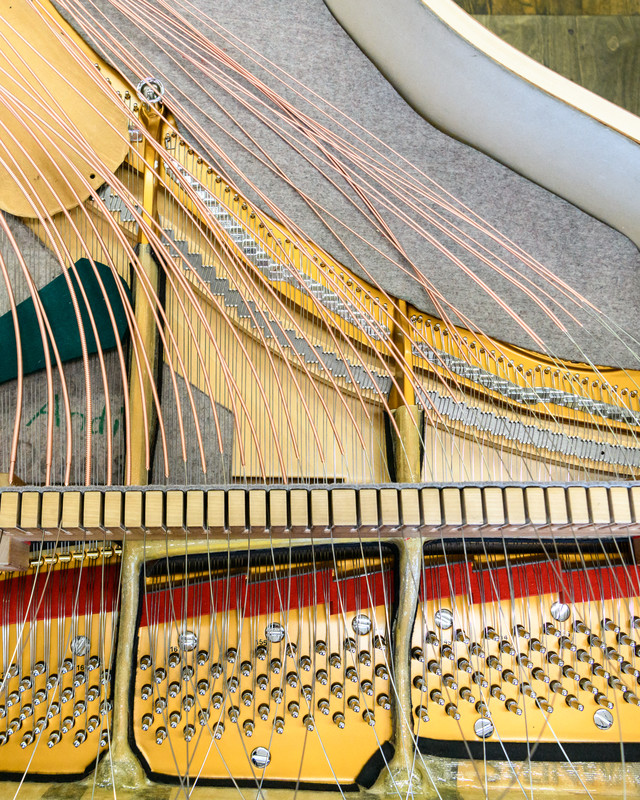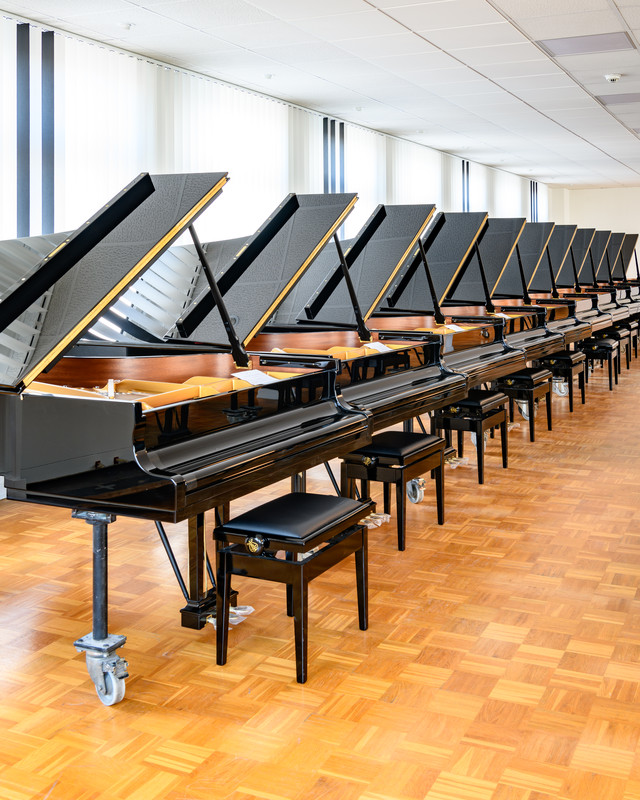Inside Steinway
© Alastair Philip WiperSteinway was founded in Manhatten in 1853 by German piano builder Heinrich Engelhard Steinway (later Steinway). The company became very successful in the US, registering hundreds of patents and defining the sound and construction of modern pianos. In 1880, in order to reach European customers who wanted Steinway pianos and to avoid high import taxes, a factory was established in Hamburg Germany. Today that factory employs around 400 people and produces 1000 grand pianos and 200 upright pianos per year, which is matched by the New York factory.
Steinway pianos have become so influential that over 95 per cent of concert halls use Steinway pianos, and that critics have said the monopoly they have on the industry has stifled innovation and led to the homogenisation of the sound favoured by pianists. As the brand edges towards production of their 610,000th piano, I'm sure the criticism won't bother them that much.
A steinway piano takes around a year to build, and contains around 12,000 pieces. Once the construction is finished, the piano is tuned using measuring instruments, before being "voiced" - given it's unique character - something that only a human can do. At Steinway in Germany this is done by Wiebke Wunstorf, who has worked at Steinway for 39 years.





"Using a tiny file, hammers and rubber blocks, she and her team of three make minuscule adjustments to ensure the instrument sounds like a Steinway. “This is something you cannot describe – it is something you feel,” she says. “You also have to learn when to stop, as it’s important to keep the power and strength of the tones. If you work too long you can destroy something beautiful – it becomes too even, and loses its character and individuality.”
A classic Steinway will set you back around $195,000.
click to view the complete set of images in the archive
